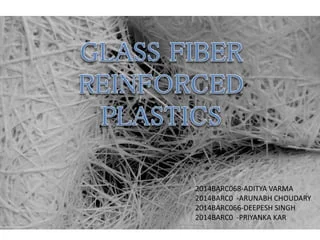With exceptional stiffness, strength and fatigue properties surpassing steel on a weight basis, carbon fiber reinforced polymer (CFRP) composites trigger transformative change across civil infrastructure sectors.
As builders push design envelopes realizing ambitious geometries, accelerated schedules and minimal environmental impacts, CFRP composites deliver the performance to make many next generation structures feasible.
What are Carbon fiber reinforced polymer?
Cfrp integrate high-tensile strength carbon fibers within a polymer matrix that effectively transfers loads between fibers.
Epoxy resins commonly provide the matrix, but alternatives like polyesters and vinyl esters suit some applications better. By fine-tuning fiber alignment and ratios, engineers tailor the anisotropic composite to application needs from rebar and wraps to structural shapes.
Key CFRP Material Properties
CFRP boasts the highest strength-to-weight ratio among construction materials.
Its 75,500 psi tensile capacity competes with E-glass composites while weighing 20% less.
High stiffness ranging from 10-77 MSI also suits lightweight efficiency goals.
CFRP resists chemical corrosion and will not propagate cracks. Fire protection requires surface treatments, and UV resistance falls behind glass fiber counterparts.
Why Use CFRP Composites in Infrastructure?
From strengthening historic structures to building modern signature spans, CFRP allows achieving more with less material.
Retrofitted wraps help seismically upgrade walls, columns and slabs by adding shear and confinement strength precisely where needed without adding dead load.
CFRP reinforcing in new construction enhances concrete crack control and lifespans.
And innovative all-composite structural shapes facilitate bold, long-reaching designs.
Strengthening Structures with External CFRP
Externally bonded CFRP laminates, fabrics and plates upgrade under-capacity structures.
Anchored into substrate resin, these strengthening overlays add flexural and shear reinforcement, enhance ductility and provide confinement exactly where required without significant self-weight increase.
Column wraps boost axial and shear capacities while preventing buckling.
For best economy of material external reinforcements optimize upgrade potential.
Fabrication Techniques for CFRP Components
Whether via manual wet layup processing, automated tape laying or advanced 3D weaving, aligning high-strength carbon fibers favorably to encounter principal stresses boosts efficiency.
Pre-preg fabrics and unidirectional tapes simplify achieving fiber orientation control.
Resin transfer molding pressure infiltrates fibers for optimal fractional volumes between 45-65%.
Microwave or oven post curing maximizes resin properties.

Testing CFRP Composites
Validating CFRP material models requires coupons undergo comprehensive tensile, flexural, fatigue plus environmental conditioning assays per established ASTM testing methodology.
Outcomes feed finite element analyses predicting infrastructure composite behavior over decades long lifecycles.
Coupled field testing of subcomponents and whole structures calibrates designs precisely.

What are CFRP Raw Materials?
Carbon fibers form the backbone using polyacrylonitrile (PAN) or pitch-based graphite precursors in an extrusion, carbonization and surface treatment process boosting tensile strength markedly.
Thermoset or thermoplastic resins like epoxy, vinyl ester and polyester serve as matrix binding and stress transferring material between fibers.
Catalysts added just before fabrication initiate resin curing.
Weighing CFRP’s Pros and Cons
CFRP advantages include exceptional strength-to-weight ratios surpassing steel’s while weighing 20% less.
High rigidity suits long, lightweight spans; chemical and corrosion resistance add longevity.
Cost remains the chief limitation for now, though manufacturing scale economies help in automotive and aerospace sectors.
Sensitivity to application technique highlights the need for experienced contractors.
How Cost Competitive can CFRP Get?
Infrastructure scale-up lags behind aerospace and automotive sectors for now, limiting CFRP first cost advantages.
But industry projections expect carbon fiber demand doubling over a decade, yielding supply chain efficiencies and potentially halving cost per pound.
With lifecycle benefits factored, consultants foresee composites attaining cost parity around 2030.
Further advances in automated production will accelerate parity.
Engineers are already realizing once impossible geometries and resilient upgrades with CFRP composites.
And continued cost declines will multiply applications across civil infrastructure.
From signature bridges to soaring roofs, high-performance high-rise structures to resilient pipelines, CFRP materials usher in an era of elegantly efficient structural design that balances strength, span, and sustainability optimally.






